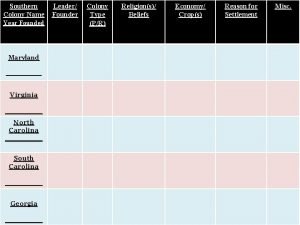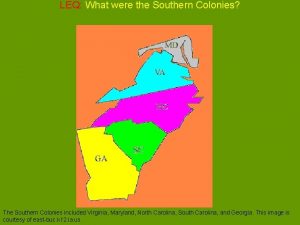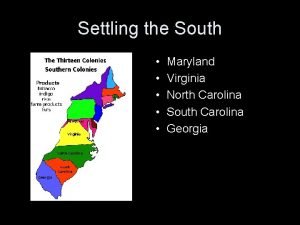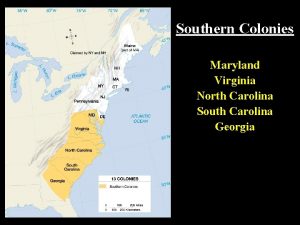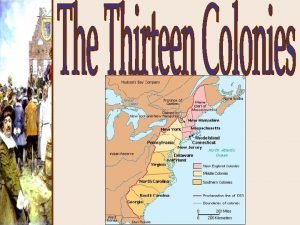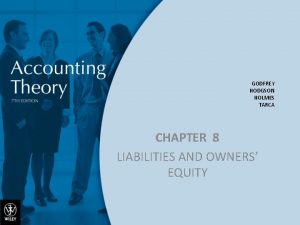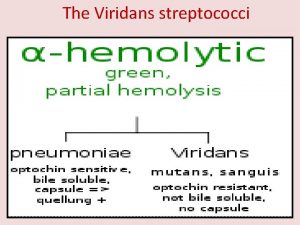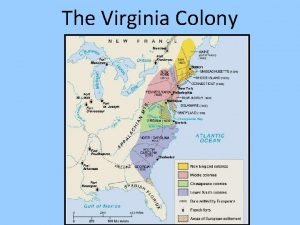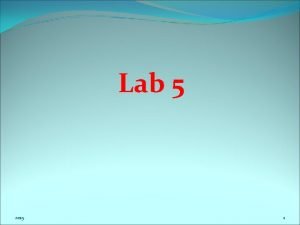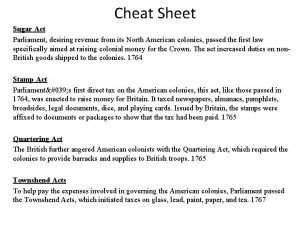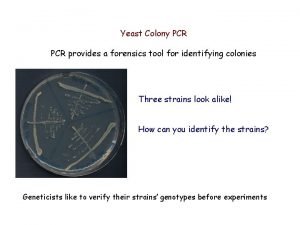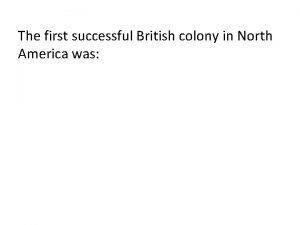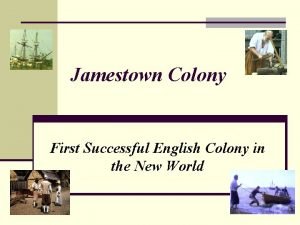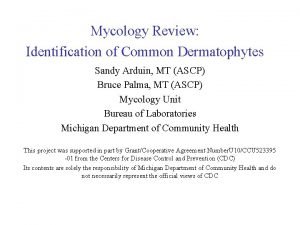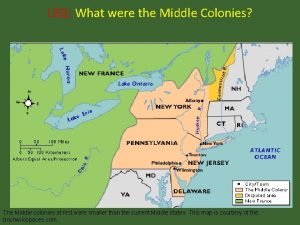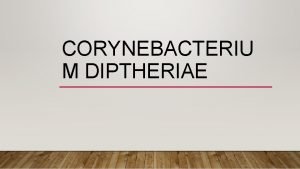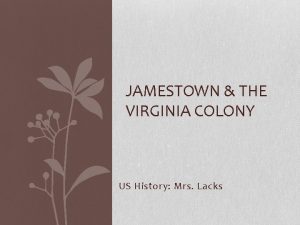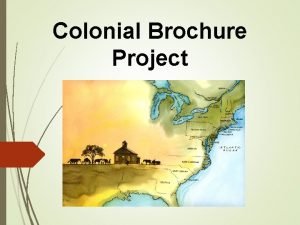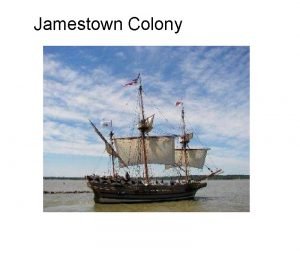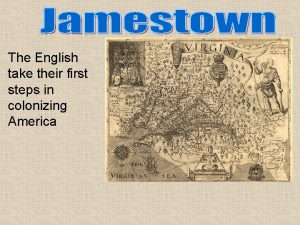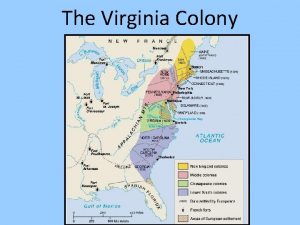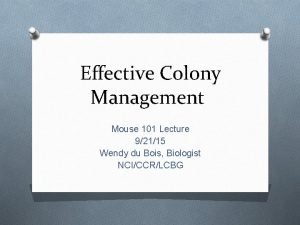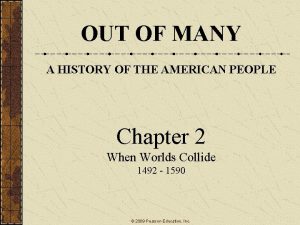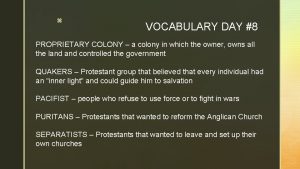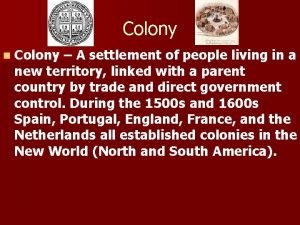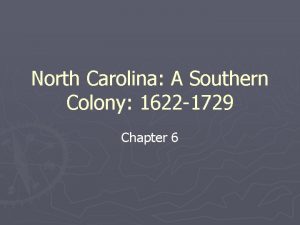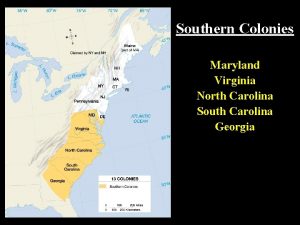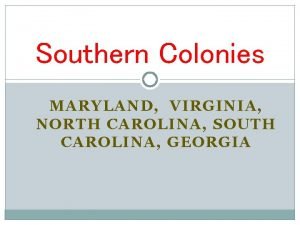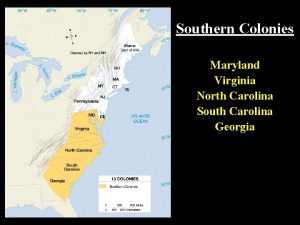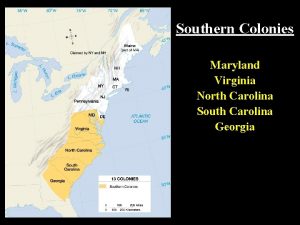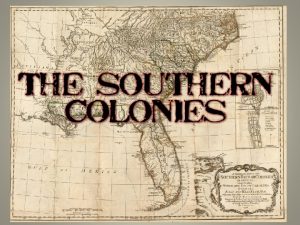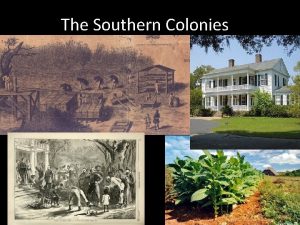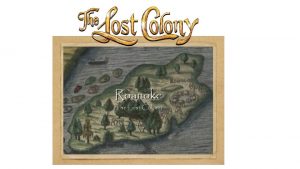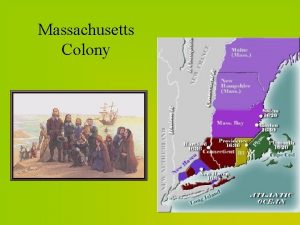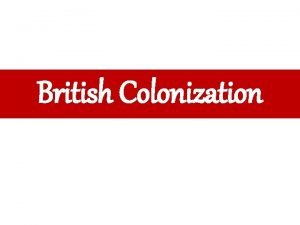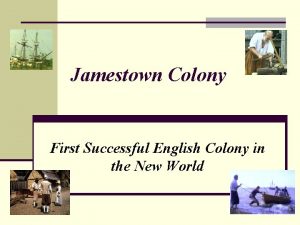Early Carolina A Southern Proprietary Colony Settlement l













































- Slides: 45

Early Carolina A Southern Proprietary Colony

Settlement l l l The first recorded visit to what is today NC was in 1622 by John Pory. He found tall pines that would make good masts for ships. They would also provide tar and pitch (naval stores). Albemarle Sound Region “Cradle of the Carolinas”

Carolina’s First Settlers Came Down From Virginia for New Land to Grow Tobacco

Heath Patent l l l New grants could be made in Carolina after King James revoked the charter from the Virginia Company. Charles I, king James’ son gave some of the land to Robert Heath, his Attorney General. The grant started from the southern shore of Albemarle and went to almost Spanish Florida. Heath Patent

Carolina’s First Permanent Settler l Nathaniel Batts was the first known permanent settler in what would be present North Carolina. In 1655 he built a small house along Salmon Creek at the western end of the Albemarle Sound. Batts made a tribute trading with Native Americans in the area.

Proprietorship l l l This area was called Carolana (Latin for land of Charles). A civil war broke out in England between supporters of the king and supporters of Parliament controlled by Puritans. The crown lost, and Charles I was beheaded in 1649. King Charles I Great Britain

Proprietorship l l The monarchy (king/queen) was restored when Charles II was crowned in 1661. He repaid those who helped him by giving them titles, estates in England abroad.

Lords Proprietors l l l The eight men who helped Charles II were called the Lords Proprietors of the old Heath Patent. They were given a charter in 1663 which gave them: - the right to give titles of nobility - establish towns and counties - build forts - collect taxes George Monk Duke of Albemarle Anthony Ashley Cooper Earl of Shaftsbury

Charter of 1663 The Birth Certificate of the Carolinas (On Display at the North Carolina Museum of History) Raleigh

Organization l l The first three counties created were Albemarle, Clarendon, and Craven. 1660’s Map of Albemarle Sound Region The first area to be settled was Albemarle County. Area Covered by Albemarle County

Government l l l The government Albemarle County included an Assembly, a governor, and a Council The Assembly was made up of delegates elected by male landowning settlers. They decided how the colony’s money would be spent and set the governor’s salary. Chowan County Courthouse “Oldest Courthouse in the State” 1767

Governor l l l Was appointed by the Proprietors Carried out the Proprietors’ wishes Set dates for Assembly meetings Could send the Assembly home No law could be passed without his approval

Council l Made laws for the colony Acted as a court Were named by the Assembly and the Eight Lords’ Proprietors

Political Parties l l Quitrent – land tax Prerogative party: believed that a government as independent of the people as possible would be best for the colony. Popular party: believed that the will of the people through representatives would be the best government. The bitter disagreements between these two parties earned Carolina the reputation of being England’s most unruly colony.

The Albemarle Region l l The most important form of wealth for a colony was land. To make money from the land, Proprietors needed settlers to buy it and pay a quitrent.

Problems l l l This wasn’t happening for several reasons: - The county was isolated from the outside world. - Proprietors only allowed small land grants. - Officials kept poor records - Quitrents were double those in Virginia. Albemarle Sound

Problems l l The Assembly tried to lure settlers to Albemarle by passing new laws: - Newcomers did not have to pay taxes for a year. - They were free from lawsuits because of debt. - They were free from trial for crimes committed outside Albemarle.

Problems l l The main reason settlers were slow to come to Albemarle was because the Proprietors failed to provide a stable government. - Some governors were weak and couldn’t get anything done. - Some were dishonest and took advantage of their position to get rich. - They failed to preserve order or protect the people. George Monk Duke of Albemarle One of the 8 Lords Proprietors

Culpeper’s Rebellion l l Carolina’s first rebellion was over several trade laws called the Navigation Acts. These laws stated that colonial trade goods could only be carried on English ships.

Culpeper’s Rebellion l l Certain goods, including tobacco could be shipped only to England. If colonists wanted to ship tobacco to other colonies, they had to pay a tax on it.

Culpeper’s Rebellion l l The leaders of the rebellion were: George Durant, John Jenkins and John Culpeper The men who supported the proprietors were: Thomas Eastchurch and Thomas Miller

Culpeper’s Rebellion l l Eventually, Culpeper is arrested for treason. The Proprietors were afraid that the rebellion would make the colony appear poorly governed. So, one of the Proprietors, Cooper, defended Culpeper. He was found not guilty of treason.

Governor Sothel l l Seth Sothel was appointed governor to improve conditions in Albemarle. He soon proved to be one of the most corrupt governors in the English colonies.

Governor Sothel l l He was tried by the Assembly and found guilty on 13 charges. He was banned from the colony for a year and he could never again hold government office.

Gibb’s Rebellion l l Gibb’s Rebellion was a nonviolent rebellion in which there was a disagreement over who was actually governor. The Proprietors supported Philip Ludwell. He was governor for 15 years, because he was honest and sensible.

Pamlico River l l l The next region to be settled after Albemarle was the Pamlico River. French Huguenots (French Protestants) moved into the area from Virginia because of the pleasant climate and cheap land.

Growth l l In 1705, the town of Bath was established. The town of New Bern was settled by Germans, a few Swiss and English. In 1675, Albemarle’s population had been about 4, 000. By 1710, North Carolina’s population was around 15, 000. Palmer Marsh House: Bath Saint Thomas Episcopal: Bath

Proprietors Divide Carolina 1712

War and Peace l l The three main problems that North Carolina had to deal with in the early 1700 s were: - trouble between religious groups. - war with the Native Americans - pirates

Religion l l The official, taxsupported church of Carolina was the Anglican (Church of England, Episcopal) Church. People who disagreed with the beliefs and rituals of the Anglican Church were called Dissenters( Quakers, Baptist, Presbyterians).

Religion l l Quakers were the majority of the Dissenters. The Vestry Act required that a tax be paid to the Church of England. Early 1700’s Quaker

Religion l l Quakers, Presbyterians, and some Anglicans objected to the tax. They didn’t believe they should have to pay to support a church they didn’t belong to. Celtic Cross Symbol of Presbyterian Church

Quaker Prejudice l l Another law was passed that required that Assemblymen be Anglicans and that all officials take an oath of allegiance to the English queen. before taking office. This was against Quaker beliefs. Early 1700’s Carolina Quaker Couple

1 st Governor of a Place Named North Carolina l l Edward Hyde took office as the first governor of North Carolina on May 9, 1712. This also marks the day that North and South Carolina split into two colonies. Edward Hyde 1 st Governor of North Carolina after the Carolina’s were Divided

Cary’s Rebellion l l Governor Hyde who replaced Thomas Cary Quakers to office and revoked the oath law. Cary, unhappy to have been replaced, sailed to Hyde’s home on the Albemarle Sound and fired cannon at it.

Cary’s Rebellion l l l No one was injured, but Cary fled when he thought the Virginia marines were coming after him. Cary was captured and sent to England, but he was never tried. This brought an end to Cary’s Rebellion.

Native Problems l l The Tuscarora and other Native Americans were upset with the colonists for three reasons: They were being cheated by traders. They resented losing their land. Their people were being taken as slaves.

Tuscarora War l l l In September 1711, they began attacking settlements along the Pamlico and Neuse Rivers. Bath and New Bern are attacked After two major attacks led by the South Carolina militia, the Tuscarora were defeated and left the colony to join relatives in New York.

Aftermath The Tuscarora War left the colony with: l Loss of property and lives l A huge debt l According to a new law passed by Governor Eden, all towns with 60 or more families could send a delegate to the Assembly. These towns were called borough towns.

Pirates l l Pirates liked the North Carolina coastline because it provided good hiding places. Also because merchants were willing to buy their stolen goods.

Pirates l The two most famous pirates were Edward Teach, also known as Blackbeard and Stede Bonnet.

Stede Bonnet l l l South Carolina’s governor wanted an end to piracy. Stede Bonnet was captured by Colonel William Rhett at the mouth of the Cape Fear River. He was taken to Charles Town where he was tried, convicted and hanged.

Blackbeard l l l The governor of Virginia sent Lt. Robert Maynard after Blackbeard. After along battle at Ocracoke Island, Blackbeard was beheaded by Maynard. His head was displayed in the ship’s rigging as they sailed into Bath.

Colonial Growth l NC began to grow after: l l l The departure of the Tuscarora The end of piracy Leadership of competent governors

End of Proprietorship l l l On July 25, 1729, the Crown bought North Carolina from 7 of the 8 Lords Proprietors. Lord Granville did not sell his share. North Carolina would be a royal colony until the Revolutionary War. John Carteret, Lord Granville: The only proprietor who did not sell his share of Carolina to the king
 Heliocentric vs geocentric venn diagram
Heliocentric vs geocentric venn diagram Southern colonies founder
Southern colonies founder Map of north carolina and south carolina
Map of north carolina and south carolina Virginia, maryland, north carolina, south carolina, georgia
Virginia, maryland, north carolina, south carolina, georgia Virginia, maryland, north carolina, south carolina, georgia
Virginia, maryland, north carolina, south carolina, georgia North carolina marschland
North carolina marschland Proprietary format
Proprietary format Proprietary freeware
Proprietary freeware Proprietary software advantages and disadvantages
Proprietary software advantages and disadvantages Confidential & proprietary
Confidential & proprietary Proprietary theory
Proprietary theory Assura inc
Assura inc Proprietary and confidential do not distribute
Proprietary and confidential do not distribute Early cpr and early defibrillation can: *
Early cpr and early defibrillation can: * Middle colony clothing
Middle colony clothing Streptococcus pneumoniae quellung reaction
Streptococcus pneumoniae quellung reaction Trustee colony
Trustee colony Filamentous bacteria colony
Filamentous bacteria colony Virginia colony advertisement
Virginia colony advertisement Similarities between trustee and royal colony
Similarities between trustee and royal colony Echinulate growth
Echinulate growth Crown or colony cheat sheet
Crown or colony cheat sheet Yeast colony pcr
Yeast colony pcr First successful british colony in america
First successful british colony in america Dentocult lb test
Dentocult lb test First successful english colony
First successful english colony Roanoke island 1585
Roanoke island 1585 Microsporum nanum
Microsporum nanum 13 colonies map
13 colonies map Compare and contrast trustee period and royal colony
Compare and contrast trustee period and royal colony Daisy head colony of corynebacterium
Daisy head colony of corynebacterium Virginia colony
Virginia colony Middle colonies brochure
Middle colonies brochure Filo cnidaria classes
Filo cnidaria classes Musket
Musket Who governed the royal colony of georgia?
Who governed the royal colony of georgia? 1607 king of england
1607 king of england John rolfe
John rolfe Caries activity vs caries susceptibility
Caries activity vs caries susceptibility What is a colony
What is a colony The middle colonies
The middle colonies Mouse colony management spreadsheet
Mouse colony management spreadsheet Roanoke colony
Roanoke colony First successful english colony
First successful english colony The bracts is also has zooids
The bracts is also has zooids Vayupuri colony
Vayupuri colony

